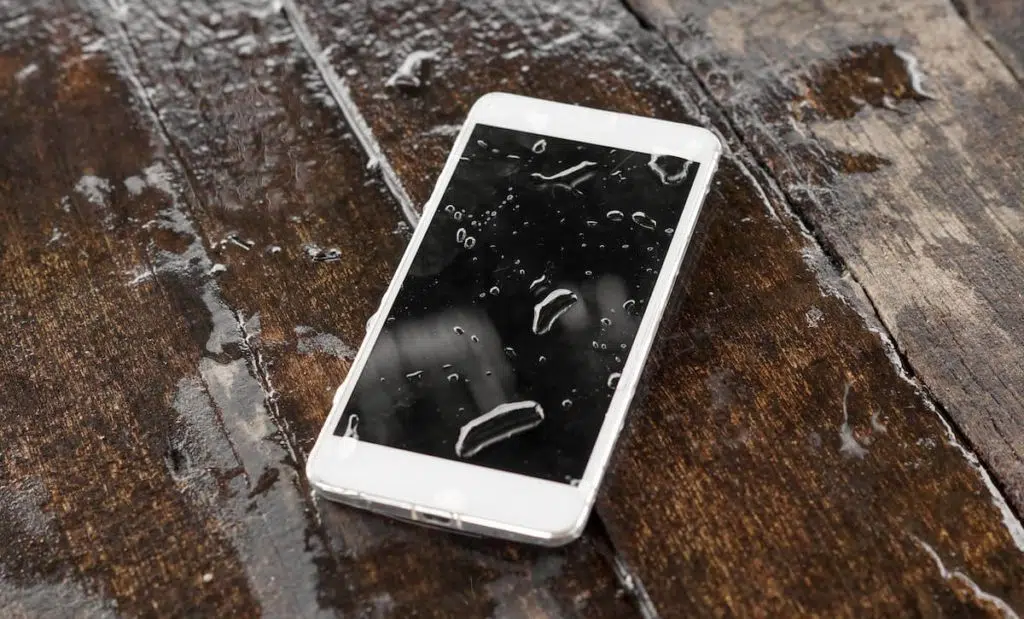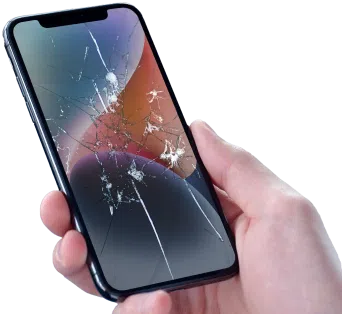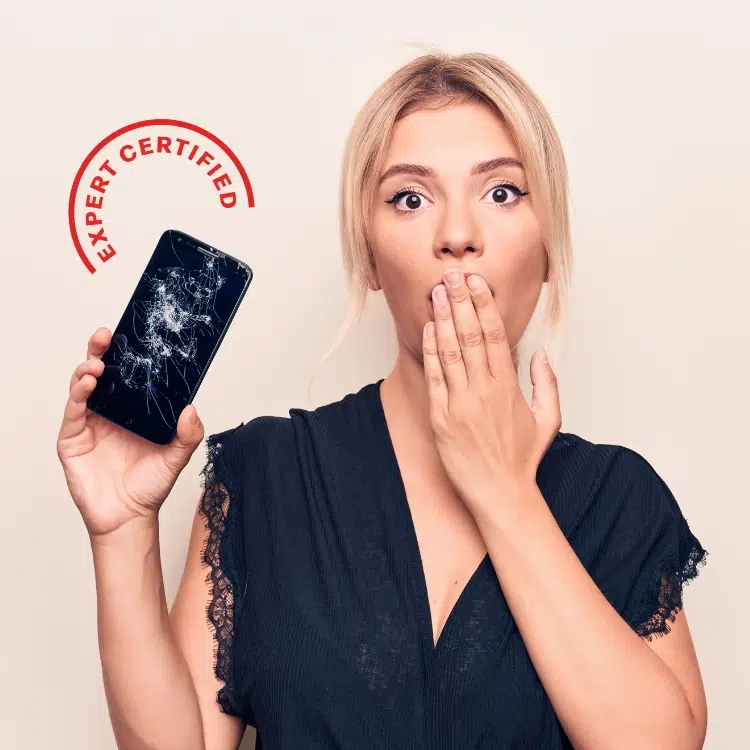
We all dread and try to avoid it but, sometimes, our favourite mobile devices take a dunk in the drink. From fountains and ponds to bathtubs, lakes, and even toilets (though hopefully not), there are plenty of places where one may have dropped an iPhone in water. While modern iPhones are designed to be certified for various water and dust resistance levels, this does not equate to being waterproofed. Or, what if you have an older device, such as the first-generation iPhone SE, that doesn’t offer water resistance of any kind?
Should you happen to have a water-damaged iPhone, fear not. We’re happy to lean on our many years of expert repairs to help you try to save it. Here are several best practices and tips you can attempt, and if these don’t work out, we may be able to save it with a repair!
What Not to Do
Whether you’ve dropped an iPhone in water within a pool tub, bucket or otherwise, not every potential repair step is going to help matters. In fact, some can complicate things or make a repair impossible! Therefore, before we get started on how to repair wet iPhones that have seen better days, let’s first highlight several absolute no-nos that you should avoid at all costs. Each of these are much likelier to worsen the damage caused, spread moisture around, cause other issues or even potentially risk your safety.
Use the Phone While Wet
If you’re keeping your phone on or continuing to use it after it has taken a dip, water damage is much likelier to occur – and intensify. Not only that, but you run the risk of shorting out the system, which can make repairs costlier and more time-consuming.
Plug it in or Use the Charging Port in Any Way
Whether you want to retrieve a file or juice up the battery, this is not the time for it. Your phone shouldn’t be on, and it should certainly not be plugged into anything whatsoever. This can result in an electrical short-out or even combustion resulting in a fire if you’re not careful! No matter how many safety features an iPhone may include, it’s better not to gamble by plugging it in when water-damaged or wet.
Use a Hair Dryer or Other Heat Source
Forced hot air – even cool air, really – is likelier to worsen the damage by spreading moisture around within the phone. Heat, however, carries the additional risk of damaging device internals on its own. Therefore, you’re better off avoiding fans, space heaters, furnace sidewall exhausts, and other similar sources of forced air.
Is your phone not working?
Get a free phone diagnosis in 5 minutes when you visit us in-store.
Learn more
Steps You Can Take to Potentially Save Your Water-Damaged iPhone
Now, let’s dive into several routes you can take in an attempt to restore your device to working order. Aside from repair or replacement services, none of these are guaranteed to work, but they are certainly worth a try.
iPhone in the Water Still? Retrieve it, Shut it Off, Remove the Case and Dry it Carefully
Of course, it goes without saying that you’ll want to rescue your device from its watery grave right away. Once you’ve retrieved it, shut it off immediately (don’t just put it to sleep). Ensuring the device is not powered on is crucial, as a short can easily occur if the liquid reaches any contacts or other electrical components, which can brick your phone. Once this is done, if the iPhone is in a case of any kind, remove it. These often contain grooves, nooks and crannies where water can accumulate, so it’s best to put them and any other attached accessories aside. Now, carefully dry off the entire exterior casing of the phone but be sure to avoid rotating it too much while doing so. This can sometimes help to control how far the water can spread inside.
Remove the SIM Card Tray
After retrieving the phone, removing its accessories and drying it off on the outside (taking extra care with the charging port, headphone jack, and other openings), you should remove the SIM card tray if your device doesn’t use an e-SIM. Despite these usually having a bit of a watertight seal on them, it may not be enough, and sometimes liquids can still find their way inside. Not only does this reduce the potential damage that could be caused to your iPhone, but it may even negate the need to replace your SIM card with a carrier.
Try to Remove Excess Water Without Disassembling the Phone
Is water dripping out of the corners of your phone’s display, a port, around the buttons or otherwise? Consider turning the phone over, screen side facing downwards, and allowing the excess water to drain out. This is sometimes not possible, meaning the liquid is trapped within the phone, but it’s more than worth a try. Not moving the phone around much beforehand can occasionally keep the water near these openings, in which case it may drain out more readily by not being deeper within the chassis of the device. Again, this is not guaranteed to work, but perhaps consider giving it a shot.
The Uncooked Rice Method
This is a meme in its own right nowadays, but it can sometimes actually work to prevent your phone from becoming unusable. Uncooked rice absorbs moisture like crazy, and it may be able to draw out the water from within your device. Try placing it in a container of it, covering it completely and leaving it powered off, and let it sit for around 48 hours. If your indoor environment has low-humidity conditions, the rice can cling to whatever alternative moisture it can find, meaning your iPhone would serve as a primary source. There is a slight risk to this procedure, however, in that grains or dust can become trapped within the charging port or other openings. If your phone is designed to be dust resistant to a certain degree, it will be handy here but, again, there are no guarantees with this method.
Silica Gel Packets
Are you familiar with those small silica gel packets that, while toxic to ingest, often ship with purchases (usually from warmer regions of the world)? If you have any that you haven’t gotten around to tossing out, they may be a worthwhile alternative to the uncooked rice method we just covered. It’s also safer for your device as nothing will get clogged in the ports. This can sometimes be more effective, as these are designed to protect the goods they are packaged with from moisture caused by high humidity.
If You Have AppleCare+, You Can Get Your Device Replaced
When it comes to Apple iPhone warranty water damage guidelines, believe it or not, you may be able to get your device swapped out if it meets a watery fate. Upon purchasing your iPhone, you are given the chance to enrol it in the AppleCare+ warranty plan. This is usually available to you within a period of the first several weeks. While your device comes with a standard one-year warranty from the manufacturer, this is an upgraded option, and we recommend signing up as a precaution. While the base warranty does not cover water damage, the paid option does. If you’ve already enrolled in the latter and now have a water-damaged iPhone, an instance of AppleCare+ can be used for a $50 deductible fee to replace it.
One other factor to bear in mind: Apple employees know exactly how to check for whether moisture has gotten into the phone. Each model includes a hidden indicator that changes colour when it gets damp. If moisture is detected in this way and you have the base warranty, you’ll be ineligible for a replacement or servicing without paying a much higher fee.
No Warranty Coverage? Visit a Certified and Experienced Repair Provider
Of course, not everyone wants to pay extra for additional warranty coverage, especially if they’re on a budget and/or are generally careful with how they handle their device. If you’re unsure how to fix a water-damaged iPhone and suspect that it can’t be done on your own, turn to an experienced and reputable repair provider. The technicians at Mobile Klinik stores know the ins and outs of all recent iPhone and iPad models. They have a solid understanding of how to carefully and proactively disassemble the device using the appropriate tools and best practices, following precise guides to ensure accuracy while minimizing the risk of the issue worsening.
If you have a water-damaged iPhone screen, for example, they’ll be able to detach the screen assembly and replace it. Afterwards, the technician will perform diagnostics to determine whether this is the only form of damage present. Other components most frequently damaged by water ingress include the speakers (which can become muffled or non-functional), the battery (the warmest component, attracting moisture), the system board housing sensitive electronics including the processor and RAM, and the camera assembly (moisture can sometimes find its way behind the lens).
The best phone repair service providers work diligently and time-efficiently without compromising on details or taking chances, verifying that everything is working as it should. Some, like us, even stand by their work and back it up with a workmanship guarantee on all parts and labour, and most common phone repairs can be completed by our team in the same day*.
If you’re unsure how to get water out of an iPhone or prefer to get it repaired by a professional technician, turn to us for peace of mind. To learn more about our services, reach out to your nearest Mobile Klinik store – we have dozens of locations across Canada that are more than ready to assist!



